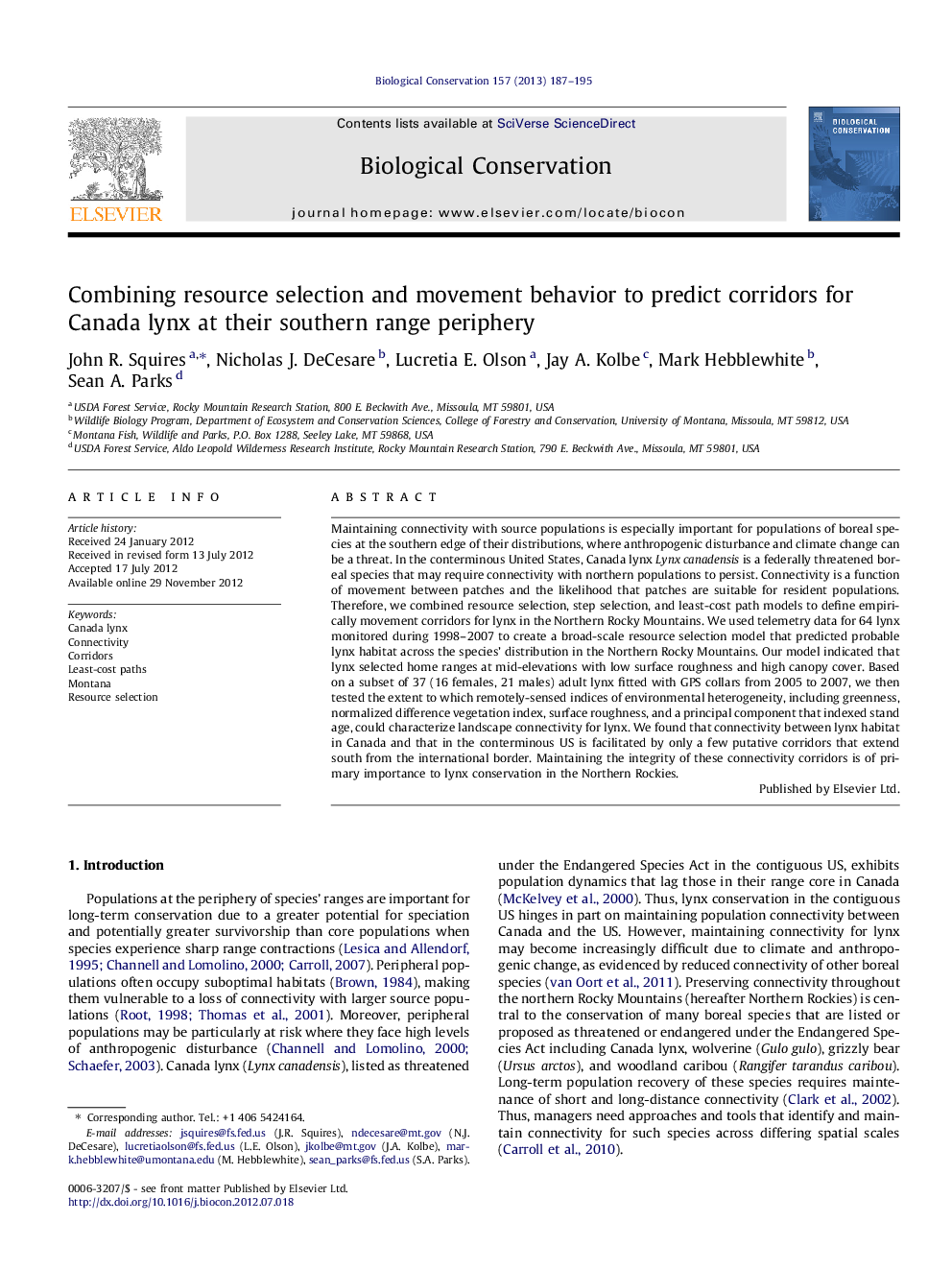| کد مقاله | کد نشریه | سال انتشار | مقاله انگلیسی | نسخه تمام متن |
|---|---|---|---|---|
| 4385201 | 1617944 | 2013 | 9 صفحه PDF | دانلود رایگان |

Maintaining connectivity with source populations is especially important for populations of boreal species at the southern edge of their distributions, where anthropogenic disturbance and climate change can be a threat. In the conterminous United States, Canada lynx Lynx canadensis is a federally threatened boreal species that may require connectivity with northern populations to persist. Connectivity is a function of movement between patches and the likelihood that patches are suitable for resident populations. Therefore, we combined resource selection, step selection, and least-cost path models to define empirically movement corridors for lynx in the Northern Rocky Mountains. We used telemetry data for 64 lynx monitored during 1998–2007 to create a broad-scale resource selection model that predicted probable lynx habitat across the species’ distribution in the Northern Rocky Mountains. Our model indicated that lynx selected home ranges at mid-elevations with low surface roughness and high canopy cover. Based on a subset of 37 (16 females, 21 males) adult lynx fitted with GPS collars from 2005 to 2007, we then tested the extent to which remotely-sensed indices of environmental heterogeneity, including greenness, normalized difference vegetation index, surface roughness, and a principal component that indexed stand age, could characterize landscape connectivity for lynx. We found that connectivity between lynx habitat in Canada and that in the conterminous US is facilitated by only a few putative corridors that extend south from the international border. Maintaining the integrity of these connectivity corridors is of primary importance to lynx conservation in the Northern Rockies.
► We model movement and connectivity of Canada lynx using empirical data.
► Lynx select home ranges at mid-elevations with low terrain variability and high canopy cover.
► Lynx movement decisions depend on forest vegetation, terrain variability and stand age.
► North–south lynx habitat connectivity is likely maintained by few movement corridors.
► Maintaining connectivity corridors has important implications for lynx conservation.
Journal: Biological Conservation - Volume 157, January 2013, Pages 187–195